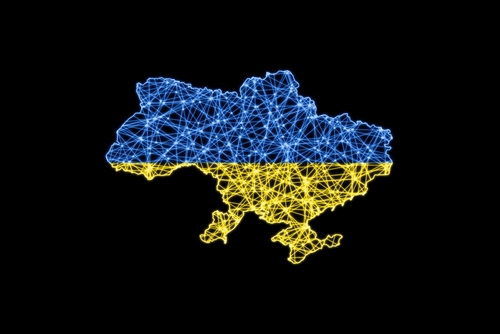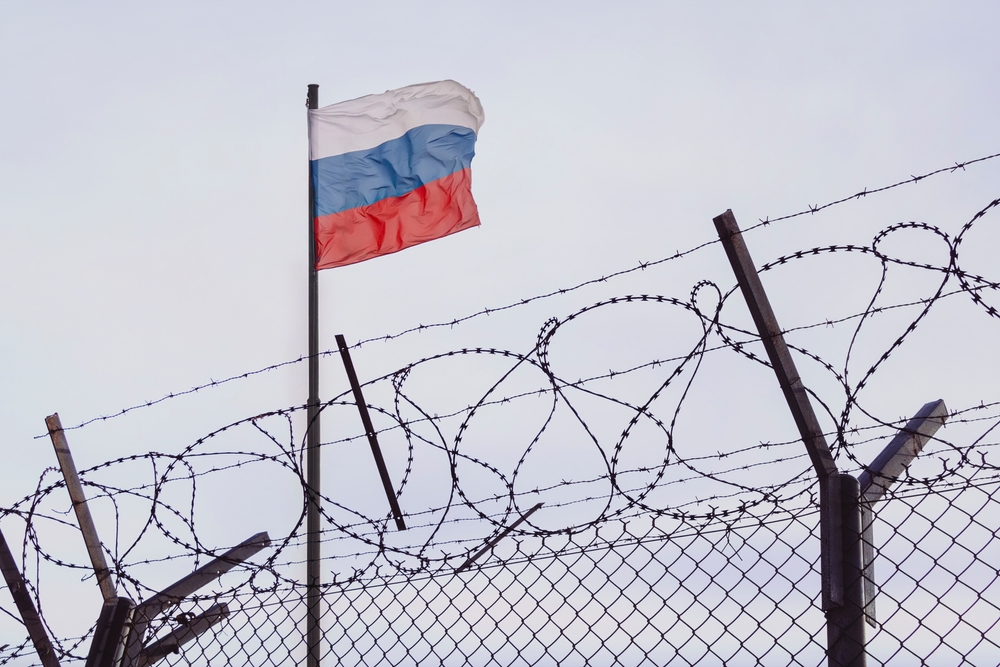
Since the outbreak of the war, the Russian Federation has been talking about the disintegration of Ukraine with subject and predicate, arguing, with an appeal to history, that it is an artificial, unviable state. Recently, Moscow’s plans to do so have included Romania, Hungary and Poland.
Map showing Ukraine divided, branded as ‘disinformation’
A map showing Ukraine divided between the three states, with only the region of Kiev reduced, has been circulated online. But talks about “partitioning” Ukraine is nothing new. Such plans were launched, for example, when the deputy speaker of the Russian parliament, Vladimir Zhirinovsky, addressed the Hungarian, Polish and Romanian governments in March 2014 after the annexation of Crimea, referring to the idea of a similar partition. Or when a former Polish foreign minister said that in 2008 Vladimir Putin had proposed to the then Polish prime minister, the partition of Ukraine.
Labelled as Russian “disinformation” and “propaganda” or a “conspiracy theory”, this story of Ukraine’s dismemberment seems like a Kremlin fantasy at a time when the withdrawal of borders to Europe goes against the principles of the UN Charter. The generally accepted view among European analysts that any re-creation of borders, especially along ethnic lines – because the three states would practically swallow up regions inhabited by their own ethnic groups – cannot be a solution and could produce a domino effect. Romania and Poland have reacted vehemently at government level against this scenario. Analysts in Budapest, on the other hand, argue that the public launch of such a scenario could be interpreted as a message from the Kremlin chief to the US that it would be better to accept negotiations before resorting to more drastic solutions.
The deputy chairman of the Russian Federation’s Security Council, former President Dmitry Medvedev, considered to be part of Vladimir Putin’s inner circle, posted on his Telegram account a map on which eastern and southern Ukraine are assigned to the Russian Federation and the western part to Poland. The northern area also appears to be divided between Russia and Poland, the Uzhgorod region belongs to Hungary, and the provinces of Chernivtsi and Vinnitsa are added. On Medvedev’s map, Ukraine is limited to the Kiev region.
As some commentators have wryly noted, Belarus, Moscow’s main ally, would not receive any Ukrainian regions in such a scenario. According to Medvedev, this map was created by “Western analysts”, but the Russian politician made no further “revelations” about their identity.
This is not the first time that Russian officials have claimed that the West is planning to divide Ukraine’s territory, without presenting any evidence of this. Kremlin officials have repeatedly spoken of a US plan to support the transfer of a significant part of Ukrainian territory to Poland. But over time, other versions of this scenario have emerged. In 2014, former Polish Foreign Minister Radoslaw Sikorski said that in 2008 Vladimir Putin had proposed to then Polish Prime Minister Donald Tusk that Poland be partitioned.
Analysts from Ziarul Financiar, quoting El Politico, note that, at the same time, Hungarian Prime Minister Viktor Orban announced that he would press Ukraine, which was left without Crimea and part of the east of the country and still threatened by Russia, to grant autonomy to ethnic Hungarians. He wanted them to be allowed dual citizenship, “to be able to enjoy all the rights of the community and be given the opportunity for autonomy”. The speech, delivered in the Hungarian parliament, was timed to coincide with a referendum in the separatist regions of Donbas, controlled by pro-Russian forces, to declare independence from Ukraine.

Another Polish politician, Roman Giertych, former Deputy Prime Minister and Minister of Education, claims that dismembering Ukraine is Orban’s plan. In an extensive Facebook post, the Polish politician seeks explanations for the hostile attitude of the Hungarian and Polish governments towards the EU, linking it to the Russian-Ukrainian war that broke out on the 24th of February. According to his theory, all the Hungarian and Polish political movements in recent years were in fact parts of a single project, in which, after the Russian attack, Poland and Hungary would attack the western territories of Ukraine: the former would take Western Ukraine with it, the latter Transcarpathia.
Giertych also claims that it was Orban who persuaded the leader of Poland’s ruling PiS party, Jaroslaw Kaczynski, to confront the EU, and said that all their previous steps had something to do with the current war, from the government’s influence on the judiciary and curbing of press freedom to the serial conflicts with the EU.
According to Giertych , Orban and Kaczynski intended to bring part of Ukraine under their protectorate – the west, to Poland, and the Carpathian Ruthenia, with a large Hungarian population, to Hungary, ensuring the two and their parties popularity and rule for many decades. Recently, the spokesman for the Polish intelligence coordinator, Stanisław Żaryn, accused the former Russian president in a Twitter post of using lies and disinformation to attack Poland and Ukraine.
Romania: Medvede’s map part of propaganda toolkit
Romania reacted promptly and clearly to the “Medvedev map”, with the Foreign Ministry stressing in a press release that such attitudes are part of the propaganda and disinformation toolkit that the Russian Federation has been using for a long time and which has been amplified since the outbreak of the war.
“Such so-called <proposals> and <analyses> aimed at randomly redrawing the borders of some states and thus promoting the violation of international law are nothing but completely unsuccessful attempts to justify one’s own conduct of disrespecting the rules-based international order,” the Romanian MFA press release reads.
Just days after the map was published, Medvedev came back with a post claiming that the former Soviet nations Georgia and Kazakhstan are “artificial” creations. The post was deleted just 10 minutes after publication. As with the map, Medvedev did not take responsibility for the post.
Medvedev’s adviser Oleg Osipov immediately said the post did not belong to his boss, his account on Russian social network VK was hacked, Interfax news agency reported, according to The Moscow Times. The post shared with Medvedev’s 2.3 million VK followers said that after occupying the Ukrainian capital Kiev, Russia would seek to expand its borders into other areas.
The message also talked about the state of the South Caucasus:
“Georgia never existed before its reunification” with the Russian Empire in the 19th century and Kazakhstan was “an artificial state”.
Medvedev served one presidential term between 2008 and 2012, allowing Vladimir Putin to circumvent constitutional term limits. After an eight-year stint as prime minister, he was appointed to the Security Council in 2020. Clearly, these scenarios, even if those who have launched them cannot provide concrete evidence and are more likely to be conspiracy theories, cause concern, especially in the context of the Russian-Ukrainian war.
But, as Security Times analysts argue, history shows that no attempt by any state to raise territorial claims since World War II has had a long-term chance of success, not least because it would not have been supported by one of the two great powers – the US and the USSR/Russian Federation – or one of the other major veto powers in the UN – Britain, France and China. But because there was no consensus among UN members that the issue of border withdrawal should be raised. That is, to question the principles of the UN Charter, which defines member states as subjects of international law, stressing the equality of their sovereignty, the inviolability of their territorial borders and their political order, and the principle of non-intervention in the internal affairs of other states.
The same commentators also note that, regardless of the specific reasons and circumstances, with the exception of the consensual and peaceful division of Czechoslovakia and the dissolution of the USSR into 15 independent states, all border changes after 1990 were carried out in violation of international treaties and laws.
In a context where the EU is based on the acceptance of common principles and values, cooperation between its members and still, today, operates on unanimous decisions, the question of withdrawing borders appears impossible. Moreover, the failure of some states to become candidates for membership can be explained by the conflicting situations they had, at the time of application, with another state over territorial borders.



 Subscribe
Subscribe